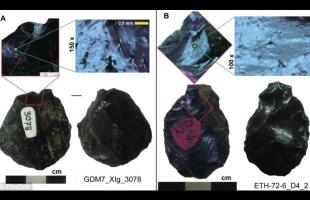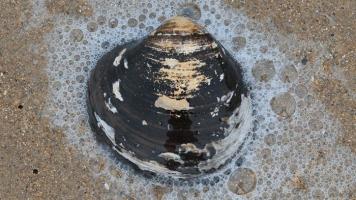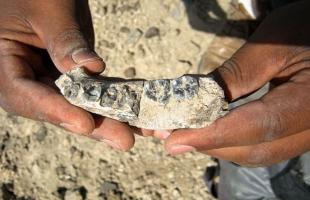Copy Link
Add to Bookmark
Report
HOMEBREW Digest #1322

This file received at Sierra.Stanford.EDU 94/01/12 01:41:47
HOMEBREW Digest #1322 Wed 12 January 1994
FORUM ON BEER, HOMEBREWING, AND RELATED ISSUES
Rob Gardner, Digest Coordinator
Contents:
SNPA yeast/yeast starters (was glycogen depletion) (korz)
Dry Yeast Suggestions/New Yeast FAQ soon!/UV on Bottles (Patrick Weix)
Diatomaceous earth (scrumhalf)
HWBTA Entry Form (Rick Garvin (703-761-6630))
Re: kegging (Dion Hollenbeck)
Re: BURP CASTLE - NYC (yeebot)
Re: Ice Chillers (Bill Szymczak)
Dry hopping rate in cornelius kegs ("when the cold winds blow, it'll ease your mind 11-Jan-1994 0851 -0500")
Re: Misc (Jim Busch)
Questions: why aerate & priming w/ malt extract (Michael T. Lobo)
Re: Wort Chiller in ice bucket (r.) cavasin" <cav@bnr.ca>
UK hops (Bob Jones)
RE: First batch worries (Earle M. Williams)
mail order (TODD CARLSON)
RE: lots of stuff ("conley")
FLAT BEER/AIRLINE TRAVEL (708) 938-3184" <HANSEN.MICHAEL@igate.abbott.com>
Flying homebrew! (Eugene Zimmerman)
Choc. Porter (WKODAMA)
Trub vs. Break(s)/Acid H2O/KitchenAid/MassMalt/Marzen (Mark Stickler Internet Mail Name)
Choc. Porter, II (WKODAMA)
transporting beer (Chris Pencis)
Re: Starters & Honey (VIALEGGIO)
Karnival of Beers (Kip Damrow)
Brewpub Search (JMO01)
Send articles for __publication_only__ to homebrew@hpfcmi.fc.hp.com
(Articles are published in the order they are received.)
Send UNSUBSCRIBE and all other requests, ie, address change, etc.,
to homebrew-request@hpfcmi.fc.hp.com, BUT PLEASE NOTE that if
you subscribed via the BITNET listserver (BEER-L@UA1VM.UA.EDU),
then you MUST unsubscribe the same way!
If your account is being deleted, please be courteous and unsubscribe first.
Archives are available via anonymous ftp from sierra.stanford.edu.
(Those without ftp access may retrieve files via mail from
listserv@sierra.stanford.edu. Send HELP as the body of a
message to that address to receive listserver instructions.)
Please don't send me requests for back issues - you will be silently ignored.
For "Cat's Meow" information, send mail to lutzen@novell.physics.umr.edu
----------------------------------------------------------------------
Date: Mon, 10 Jan 94 15:32 CST
From: korz@iepubj.att.com
Subject: SNPA yeast/yeast starters (was glycogen depletion)
Tony writes:
>>....Is yeast from a bottle pure and reliable enough to get good results?
>
>Not in my opinion it isn't. There will be bacteria and molds as well as the
>yeast. It may work or not. However, there are some pretty simple culturing
There will always be some small number of bacteria and molds, but I am
quite sure that the numbers inside a bottle of Sierra Nevada Pale Ale
are no worse than in a non-autoclaved starter that the average homebrewer
might brew up. If there were a significant number of bacteria or molds,
then the SNPA would have tasted bad too. I have made starters from SNPA
bottles many times, but now I usually just use Wyeast #1056 because, well,
I guess, just because I didn't have any SNPA handy one time and I used
the Wyeast instead.
*************
Paul writes:
> I'm responding because the beer's I've brewed recently have had a
>*very* strong, yeasty background flavor.
>
> The *single* variable at this point has been my introduction of
>starters which I've just started making using clover honey. I've had
>consistently bad results in light beers with these starters, but
>darker stouts/steam beers seem to be just fine. For example, a dry
>beer I made with a very low OG fermented out fast (within a week) and
>had this bad taste, but another beer I brewed recently was a steam
>beer with an OG of 70 which was much higher than the dry beer.
>
> This seems to be happening to me consistently when I use honey to
>power the starter. I used about 4-5 tbls of clover honey in a enough
>water to fill up a Grolsch bottle, then pitched the yeast. I left the
>bottles for the starters with the cap resting on the bottle, by
>without closing the Grolsch bail tightly. I did not use a
>fermentation lock on any of these starters. This leaves the change of
>contamination, but the starters have all been in low draft rooms to
>krausen.
It sounds as if you are not sanitizing the starter and thus your problem
might be because you are introducing a wild yeast into your fermentation.
Starters must be very, very clean (biologically speaking) because a small
problem in a starter becomes a big problem in your primary. The other
thing I see a problem with, is that you are using honey as a sugar source.
Honey does not have the nutrients (amino acids, aka FAN) for good yeast
growth. Also, you do not mention aeration. I suggest you use light, dried,
unhopped malt extract, about one ounce dry weight per 16 ounce starter,
boil it well, cool it before aerating, make sure it is at room temperature
before adding room temperature liquid yeast and maintain sanitation
very carefully.
>
> My yeasts were:
> o Munton-Fison Dry ale yeast
> o Wyeast 3056 Bavarian Wheat yeast
> o Wyeast 2112 California Lager yeast
You should rehydrate dry yeast before adding it to a starter. It is much
more difficult for dry yeast to reabsorb water from even a low-gravity
starter than from plain water. Boil up some water, cool it to between
104F and 110F and then add the dry yeast. You can let the yeast rehydrate
for between 15 and 30 minutes and then pitch or you can slowly cool the
rehydrating yeast down to the temperature of your starter and then add
the yeast to the starter.
> > - poor flocculation | I don't think so
Did the yeast take a long time to settle out? Was the beer cloudy?
Did the yeast cake at the bottom of the bottles easily stir up?
> > - high diacetyl | Don't know, please describe
Butterscotch/buttery aroma/flavor.
> > - high SO2 | Don't know, please describe
"Sharp, biting, sulfurous odor" according to the Troubleshooting Issue
of Zymurgy.
> > - high acetaldehyde | Don't know, please describe
Green apple aroma (like that in Budweiser).
Al.
------------------------------
Date: Mon, 10 Jan 1994 20:06:30 -0800 (PST)
From: weix@netcom.com (Patrick Weix)
Subject: Dry Yeast Suggestions/New Yeast FAQ soon!/UV on Bottles
Dear All:
My choices for dry yeasts are:
Red Star Ale
Llelemand Nottingham Ale
Others have recommended:
Edme
Cooper's
I would avoid the Whitbread dry. I (and others) have experienced odd
aftertastes when using this yeast.
As the editor of the yeast FAQ (and a brewer of ales), I would like to
know other peoples opinions on the dry yeasts and which types are widely
available. The best e-mail address for me is now weix@netcom.com.
A new yeast FAQ is in the works, and it will contain all the new
Wyeast info (annotated by Al Z!, thanks Al).
UV Sterilization of Bottles:
ZZZZZZZTT. Sorry, next contestant please. :-)
Glass in general, and colored glass in particular, is very effective
at screening out UV rays. You would have to put a bulb in each bottle!
Not very efficient. However, we do have a lovely copy of our home game....
------------------------------
Date: Mon, 10 Jan 94 23:22:47 EST
From: scrumhalf@aol.com
Subject: Diatomaceous earth
Diatomaceous earth is the silicified skeletons of microscopic algae.
I don't know how you would use it in filtering beer but I do know it is
sometimes used in pool filters. So if it can get the crud out of pools it
should get it out of your wort.
"Let us have wine and women, mirth and laughter,
Sermons and soda-water the day after"
Lord Byron
scrumhalf@aol.com
------------------------------
Date: Mon, 10 Jan 94 10:15:51 EST
From: rgarvin@btg.com (Rick Garvin (703-761-6630))
Subject: HWBTA Entry Form
The HWBTA National Competition Entry Form
- ----------------Entry Form---------------------------------------
HOME WINE AND BEER TRADE ASSOCIATION (HWBTA)
1994 NATIONAL HOMEBREW COMPETITION ENTRY FORM
1. Name(s) _______________________________________________________
2. Additional Brewer(s) __________________________________________
3. Address _______________________________________________________
4. City _________________________State/Province_______Zip ________
5. Country_____________________________Phone (______)_____________
6. Homebrew Club Affiliation______________________________________
7. Sponsoring HWBTA Member________________________________________
8. Address________________________________________________________
9. Homebrew Style Category (No. & Name)___________________________
Homebrew Style Subcategory (Ltr. &Name)___________________________
Recipe:
Name Of Brew______________________________________________________
Type Of Brew (Ck.)
Malt Extract Only__ Malt Extract & Grain__ All-Grain__
Mead (Dry? Med? Sweet? Very Sweet?)
Number Of Us Gallons Brewed For This Recipe_______________________
Water Treatment (Type & Amount)___________________________________
Malt (Grain & Extracts):
Type/Brand Quantity Use(Steep/Mash) Time Temp
__________________________________________________________________
__________________________________________________________________
__________________________________________________________________
__________________________________________________________________
__________________________________________________________________
__________________________________________________________________
__________________________________________________________________
Hops:
Type Pellet/Leaf Quantity Use(Bittering, Etc.) Time
__________________________________________________________________
__________________________________________________________________
__________________________________________________________________
__________________________________________________________________
__________________________________________________________________
__________________________________________________________________
Special Ingredients_______________________________________________
__________________________________________________________________
__________________________________________________________________
Boiling Time______________________________________________________
Yeast:
Liquid Brand & Type_______________________________________________
Amount________Starter? (Yes/No)_____
Dried Brand & Type_______________________________________________
Amount________Starter? (Yes/No)_____
Yeast Nutrient Brand &Type_________________________Amount_________
Fermentation:
Primary Duration_____________________________Temperature__________
Fermenter
Type__________________________________________________________
Secondary Duration___________________________Temperature__________
Fermenter Type____________________________________________________
Other Duration______________________________ Temperature__________
Fermenter Type____________________________________________________
Specific Gravities Original_______________ Terminal_______________
Bottling:
Bottles_________ Kegs___________
Carbonation (Type & Amount )______________________________________
Bottling/Kegging Date___________
Special Techniques________________________________________________
Questions? Ask Your Sponsoring Hwbta Member Or Call Brew Masters,
Ltd. (301) 984-9557 Or Fax (301) 881-9250
Judge Coordinator: Rick Garvin 703-761-6630 (rgarvin@btg.com)
------------------------------
Date: Mon, 10 Jan 94 08:25:28 PST
From: hollen@megatek.com (Dion Hollenbeck)
Subject: Re: kegging
>>>>> "Rich" == Rich Ryan <ryancr@install4.swin.oasis.gtegsc.com> writes:
Rich> I recently took the plunge and purchased 3 pin lock
Rich> kegs and the O rings from Defalco's. They arrived in
Rich> good shape other than label scum and smelling like
Rich> soda pop. BTW, they told me that they are no longer
Rich> shipping the cornelius kegs and suggested Great
Rich> Fermentations in Santa Rosa, CA. Sorry they didn't
Rich> have the phone number. Since I am new to all of this
Rich> I am not quite sure what other specific parts
Rich> are needed to complete the setup. A while back I thought
Rich> someone was in the process of compiling a FAQ but I haven't
Rich> seen anything in the archives. Can anyone provide
Rich> a list of equipment and possible sources for the
Rich> remainder of the stuff I need to start? Keep in mind
Rich> that I would like costs to be low.
The FAQ referred to is not yet available, but the kernel of what it
will become is on sierra.stanford.edu in
/pub/homebrew/docs/kegging_info. Here is the first few lines and
thanks to Alan for inspiring the FAQ. My apologies to all of you for
the FAQ taking so long, but I have been busier at work than
anticipated when I volunteered to do it and it is *much* larger a task
that I could have imagined. (I know, some of you are saying, "I don't
want apologies, I want the *(&^*(%^& FAQ" ). Alan's treatise is
excellent and is going to be prominent in the FAQ. The rest of the
FAQ is planned as a large expansion of what he has already and will
also address topics he has not covered.
- ------------------------------------------------------------
Getting Started Guide - Homebrew Kegging
By Alan J. Richer
richer@hq.ileaf.com
I have seen the light, and it is made of stainless steel....
Greetings. After having asked several dozen stupid questions about kegging,
I have decided that I should pull all of this information together into one
article for the amusement and edification of the Digest.
- -----------------------------------------------------------------
Rich> Some questions I have. What size CO2 tank is recommended? Do I
Rich> need a regulator? I don't have a pressure release valve on the
Rich> keg so how do I adjust the pressure? I'm not looking for an
Rich> elaborate setup, just plan on placing the setup in a spare
Rich> frig. TIA, for any and all help.
Any size CO2 tank is OK from 2.5 lb on up. It just depends on how
much you are planning on using it. I have a 20 lb. tank and it has
dispensed 8 kegs and done lots of CP filling and purging of equipment
(much more use that most people do with just dispensing).
Yes, you must have a regulator. Kegs blow up over 130 psi and the CO2
bottle pressure is generally around 750 psi depending on the
temperature.
You adjust pressure with the regulator. If you need to release
pressure, make up a quick disconnect fitting for the gas side with no
hose. Put it on and it will release pressure mighty quick, or take a
Philips screwdriver and poke the valve body.
One of the best supplied and most helpful suppliers of kegging
paraphenalia is BrauKunst 1-800-972-2728. Order their pamphlet for
about $1.50 or so on how to use kegging stuff. Or just talk to them
to find out exactly what you need.
Alan Richer's treatise is pretty detailed in the "getting started"
arena, so be sure to get that.
dion
Dion Hollenbeck (619)455-5590x2814 Email: hollen@megatek.com
Staff Software Engineer megatek!hollen@uunet.uu.net
Megatek Corporation, San Diego, California ucsd!megatek!hollen
------------------------------
Date: Tue, 11 Jan 94 04:22:34 EST
From: yeebot@aol.com
Subject: Re: BURP CASTLE - NYC
Just a few additional biased comments on "the Castle", one of few things I
will miss after my move to the Left Coast.
Tom writes in HBD 1321: "All they serve is draft beer..."
On the contrary, Burp Castle aside from having good beers on tap, Also has an
extremely large selection of exotic bottled beers. It's the NY mecca of
Belgian beer with beers ranging from Artevelde to St. Sixtus. Get your
cultures here!
It IS expensive ($5 for Celis Grand Cru to $41 for 3 lt. of Duvel!), but what
the hey, it's cheaper than a trip to Belgium.
I do recommend anyone who happens to be in Lower Manhattan to drop by, Just
to sip a pint while checking out the Bruegel-inspired murals. Hell, if you
don't like it, you can go next door to Brewsky's. Owned by the same guy, with
lots of other beers to try (seems the Castle only gets Belgian, French and
Swiss beers while Brewsky's gets those and in addition, other Int'l stuff.)
Weird. Oh yeah, Brewsky's plays Rock music whilst you'll get Harpsichords at
the Castle.
AND if you don't like that, you can at least go down the street to McSorley's
Old Ale House (Lincoln supposedly drank there). 3 hour wait on week-ends, I
dunno why. (Avoid flying kegs.) If you make it in, try the "Cheese and Onion"
platter, it'll make for a memorable night.
Cheers and be well,
Michael Yee
Angst Brewing Co.
Oh, and I too have no $$$ interest in these places though I'll gladly join
anyone for a round if anyone's making a beer tour of NYC!
------------------------------
Date: Tue, 11 Jan 94 07:53:26 EST
From: bszymcz%ulysses@relay.nswc.navy.mil (Bill Szymczak)
Subject: Re: Ice Chillers
In HBD1320 Bob Eddy
>From: reddy@qualcomm.com (Bob Eddy)
talks about his design for a wort chiller in which the hot wort
is passed through a coil immersed in ice and water (details
ommitted). And asks:
>procedure. My guess is that the wort temperature will be quickly reduced
>with this device.
>The disadvantages are that sanitation of the coil may be difficult (but no
>more so than with a counter-flow chiller) and I'm sure there are many
>suggestions for dealing with this problem. Also, I'm not sure how much ice
>would be required to process a batch of wort.
>Although I haven't built this device yet I am guessing someone must have
>already considered such a device before and may have good reasons for *not*
>using it. It seems simple enough to me and appears, conceptually, to be
>effective. But it may also have some hidden traps I haven't thought of.
>Has anyone tried this or does anyone have any opinions about it?
I've done this several times, mostly in the summer when my tap
water is warm. As far as sanitation I simply baked the entire
coil in the oven for about 1/2 hour at 400F. It is very
efficient (timewise) and I've cooled 5 gallons to 60F in 15
minutes, and this time could probably be decreased. The main
disadvantage is the amount of ice required. A rule of thumb is
to use about as much ice as wort you need to cool. In the
winter (if its cold in your climate) this may not be a problem,
otherwise you'll have to freeze and store (or buy) about 5
gallons of ice (about 43 pounds).
For a more precise formula as to how much ice is needed if
Tw = temperature of wort
Vw = volume of wort
Ti = temperature of ice
Vi = volume of ice
then the equilibrium temperature Tt (of the melted ice and wort)
is
Tt = (Tw*Vw + (0.453*Ti - 73)*Vi) / (Vi + Vw)
where I have assumed that the equilibrium state is liquid and
the wort and water have the same thermal properties.
In this formula, 0.453 is the ratio of heat capacities of ice
to water, and 73 is the value for the latent heat required to
change ice to water divided by the heat capacity of water.
For example, if Tw=212F, Vw=5gal, Ti=10F (typical for freezers),
and Vi=5gal, then Tt=52F. You could also solve for Vi given
atarget temperature Tt using
Vi = (Tw - Tt)*Vw / (73 + Tt -.453*Ti)
or if we take Ti=0C, Tw=100C and say Tt=15.5C (60F) then
Vi = Vw * (100-15.5)/(73+15.5) = Vw * 84.5 / 88.5
or slightly less ice than water. Of course the ice water bath
should be stirred constantly so no thermal layers form.
A similar design is described in a Zymurgy issue about 1 1/2
years ago, but also didn't say how much ice you need.
Also in HBD1321
>From: "Christopher V. Sack" <cvsack@mailbox.syr.edu>
writes
>We then did some quick, "back of the envelope" type calculations and
>discovered that one would need at least 80# of ice to cool a 5 gal. batch
>from boiling to 15 deg.C (60 deg.F). We did not take into account that
>the wort contained a high concentration of sugar. This would increase
>the density of the liquid and also increase its heat capacity, ie. one
>would need even more than 80# of ice.
I think this is an over-estimate, based not only on my
calculations but on my experience with this type of chiller.
Bill Szymczak
bszymcz@ulysses.nswc.navy.mil
------------------------------
Date: Tue, 11 Jan 94 08:55:26 EST
From: "when the cold winds blow, it'll ease your mind 11-Jan-1994 0851 -0500" <ferguson@zendia.enet.dec.com>
Subject: Dry hopping rate in cornelius kegs
I recently cranked out yet another batch/variation of brown ale, accept
this time, i did not add any finishing hops. Right now, the brew is
in the fermenter (brewed it sunday night). I used 2oz of cascase for the
boil, 2 cans of M&F light, and assorted adjunct grains (choco malt, crystal,
roasted barley).
I want to dry-hop when I keg, and I'm wondering the appropriate amount
of hops to use. This will be for 4-5 gals - not sure if I'm going to bottle
one gallon of it or not. I expect to condition it for 2-4 weeks, depending
how fast I consume the keg ahead of it (3 gals). I'm thinking of 1oz
of kent goldings (plug) in a muslin bag. Too much? Too little? I like a
good hop aroma, so I don't want to be timid with the dry-hop addition.
Any recommendations/advice welcome via the digest or personal mail.
JC Ferguson
Littleton MA USA
ferguson@zendia.dec.com
------------------------------
Date: Tue, 11 Jan 1994 09:17:44 -0500 (EST)
From: Jim Busch <busch@daacdev1.stx.com>
Subject: Re: Misc
> From: LUKASIK_D@sunybroome.edu
> Subject: Dry Hopping, Using Yeast from Primary
>
> On my fourth batch I decided to try dry hopping (it is an IPA) for aroma.
> Could someone let me know if I am following standard/proper procedures for
> this as I can not find anything in TCJOHB to give me directions. I racked
> from the primary to the secondary but before doing so ground up 1/2 oz of
> Cascade into fine particles and paced it into the bottom of the secondary.
> The problem as I see it is that 1) there is a chance of contamination due
> to no boiling of the hops, and 2) all of the hops floated to the top of the
> carboy as it was filling which made a mess of the carboy neck and doesn't
> appear to get full utilization of what I put in. We bottled the beer this
> weekend and it seems fine (tasty actually). Am I doing this correctly???
I prefer to use whole flowers, and not to damage them prior to addition to
the fermenter. Just use the good ol copper or SS scrubby pad over the
end of the racking cane to tranfer the still beer from the hops. Dont
worry about them floating to the top, as long as they are wet, they will
do the trick. I also seem to prefer the character/aroma from dry hopping
better than that from Cask hopping.
> From: Jim Grady <grady@hpangrt.an.hp.com>
> Subject: Ipswich Ale
>
> I just bought some Ipswich Ale yesterday (it comes in a 1/2 gal.
> 'growler') and there is a significant yeast sediment on the bottom, ~
> 1/16 of an inch.
Be *very* careful with this. Some of the beers I sampled in the Boston
area had quite notable fermentation defects, which no doubt originate
from the yeast. Be sure to grow a small sample, and ferment it out
for a taste test prior to using in a full batch.
Good brewin,
Jim Busch
"DE HOPPEDUIVEL DRINKT MET ZWIER 'T GEZONDE BLOND HOPPEBIER!"
------------------------------
Date: Tue, 11 Jan 94 09:23:53 EST
From: mlobo@foxboro.com (Michael T. Lobo)
Subject: Questions: why aerate & priming w/ malt extract
Greetings:
Is it "good" to boil the whole volume of H20 when making extract
based beers? The reason I ask is if it is good ( to remove all O2 ?) then why
turn around after the wort has cooled and aerate the whole mess again - in
effect undoing what the boil has done.
Also, has anyone had success using malt extract to prime with? I would like
to try using dried extract, but have no clue how much extract = 1 cup corn
sugar.
Thanks,
Michael
Michael T. Lobo 508 549 2487
Foxboro Co.
mlobo@foxboro.com "I Love beer, beer loves me; when I drink too much,
my beer speaks for me" -Monty
------------------------------
Date: Tue, 11 Jan 1994 09:38:00 +0000
From: "rick (r.) cavasin" <cav@bnr.ca>
Subject: Re: Wort Chiller in ice bucket
Re: Wort Chiller in ice bucket
Chris Slack posted regarding the 'ice in bucket' chiller.
Well, not to dispute your calculations, but I built that
chiller and used it for a while, and I never used no 80
lbs of ice. I was doing partial mashes and extract batches
at the time, and my boils were probably in the 3-4 gallon
range. I'd fill the bucket with ice and water, and the
wort coming out of the chiller was probably in the 50 deg
F temperature range. I used to have to augment the ice
near the end when most of it had melted.
The reason I switched to a conventional immersion chiller
was twofold:
a) I originally used 1/4" flexible tubing, and I found
the combination of the viscosity of the chilled wort,
the trub formed in the tubing, and various hop bits
made the siphoning VERY slow, and sometimes halted it
altogether. I'd end up perching my kettle precariously
atop a stack of bucket's etc. in a desperate attempt
to increase the head.
b) I was nervous about my ability to adequately sanitize
the inside of the tubing.
I thought of remaking the chiller with bigger tubing, but
had difficulty justifying the expenditure, given that the
immersion chiller works fairly well. I have thought of
putting a small ice bucket chiller inline with my immersion
chiller to 'pre-cool' the tap water, but that won't be
necessary till summer. Currently, our tapwater is already
dangerously close to freezing ;).
Cheers, Rick C.
------------------------------
Date: Tue, 11 Jan 1994 06:56:02 +0800
From: bjones@novax.llnl.gov (Bob Jones)
Subject: UK hops
Got this note from a friend in England. Any comments?
me to him > I just got my hands on some good fresh East Kent Goldings and
me to him > Fuggles. I'm
me to him > starting to think about my next real ale.
him to me >That's pretty good going - I hear there was a bad harvest this year,
him to me >and most of the UK suppliers are selling American Willamette (I
him to me >think)
him to me >as "Goldings substitute". Ironic really.
Bob Jones
bjones@novax.llnl.gov
------------------------------
Date: Tue, 11 Jan 94 8:13:32 MST
From: Earle M. Williams <earlew@drc.usbm.gov>
Subject: RE: First batch worries
Steve Scampini writes:
To Worry, wait or to take action:
This is my first homebrew batch ever. It has been in the bottles
for six (6) days. The first two bottles I opened have very
little carbonation. The facts are:
[stuff deleted ]
* Beer tastes good (if not pretty darn good) but is flat and a little on
the sweet side (unfermented sugars, including primer?).
If the beer tatses good but sweet, and it's only been six days,
then you can be 99% confident that the beer just needs more time.
I think you have the right diagnosis below...
* I am impatient and should wait one full month (Miller
in his book says that the CO2 forms very quickly but takes time
to dissolve in beer. It is hard to believe the little psssst sound
when I open the bottles in all the CO2 that is needed waiting around
to dissolve. How long does it take for the priming sugar to ferment?
I store my bottles at about 64 F, and I usually get good carbonation
in about ten days. your mileage may vary, as will your expectations
of how much carbonation you want.
Should I:
* Wait and not worry and have a store-bought (this is my first batch).
* Store the bottles at a warmer temp, say 65 F.(what, if any, dangers).
* Buy more yeast, make a starter, pry caps off and eye-dropper in
some yeast and recap (court of last resort).
* Scrub down the walls of my kitchen and wash the curtains in bleach?
Definitely follow the first course of action, immediately if not sooner.
Just make sure it's one with a bottle you can use for homebrew!
If you're really impatient, move a sixpack of bottles to a warmer temp
such as the 65F you suggest. That's still a relatively cool temperature
for beer, and it isn't likely to harm it at all, IMHO. I would recommend
lowering your standards before considering sucha a drastic move as
yeast injection and recapping. If you have yeast in there, as evidenced
by the existing level of carbonation, adding more isn't likely to help.
I'd recommend the last course of action, sanitizing the kitchen, only if
you have a spouse or are expecting your mother to drop in unannounced. ;->
Relax. Don't worry. Have a Homebrew! (OK - Storebought, but just this
once) ;->
- --
Earle M. Williams
U.S. Bureau of Mines
Denver, Colorado USA
(Internet) earlew@drc.usbm.gov
------------------------------
Date: Tue, 11 Jan 94 10:20:02 EST
From: carlsont@GVSU.EDU (TODD CARLSON)
Subject: mail order
It seems to me I remeber seeing (a month or so ago) a
request for good mail order sources of home brew stuff.
I too would like some references. My local stores have been
rather unreliable of late - they keep running out of
everything. I am looking for a place that has a
wider selection than I can get locally. Thanks
Todd
carlsont@gvsu.edu
------------------------------
Date: 11 Jan 1994 10:19:06 +0300
From: "conley" <conley@macgw1.crd.ge.com>
Subject: RE: lots of stuff
Subject: RE: Canadian Micro; Malts and Extracts; 6 vs. 2 row; UV Radiation;
Wort Chiller
1)One of my favorite beers is from the Upper Canada Breweries. The Upper
Canada Rebellion. Does anyone know what hops (and how many HBUs?) are used
and the OG/FG of this beer is? What about other Upper Canada beers? Has
anyone toured this Brewery?
2)
>From: "Robert H. Reed" <rhreed@icdc.delcoelect.com>
>I have found that some of the Wolf-DeCosyns grains such as
>CaraVienne and Aromatic will enhance the malty character of
>beers. Without making a comment on the quality of M&F base
>malts, I would also suggest experimenting with the Wolf-DeCosyns
>Pale malt as your base malt: I believe these grains are some of
>finest grains you can buy.
Is there a list on the net of malt extract syrups, dry malt extracts, and
malt grains that are available? Preferably with some description of each .
My HB store has info about some extracts but very little about grains.
Maybe this should be in a FAQ? (Yeast, Hops, ....Malt ....Water)
3)The difference between two row and six row barley is that when barley is
grown there develops two spikelets with seeds at each joint in the case of
two row and six seeds at each joint in six row. The two forms are different
varieties of malt plants. The amount of conversion enzymes depends on among
other things the % germination, time temperature and conditions of malting,
and extent the grains are malted.
From: dmorey@iastate.edu
RE: Subject: UV Radiation for Bottles
I thought that this would be a good method if you have a good UV source.
Brown and even clear glass shields UV very good however and I am not sure how
effective it would be at reaching the bottom of a bottle with sufficient
dosage.
RE: Subject: Wort Chiller
From: reddy@qualcomm.com (Bob Eddy)
>My idea is to construct an immersion chiller in reverse.
I thought of the same type of chiller design. And I believe one was
mentioned in HBD before. Using SNOW instead of ice. Lots of it around here.
However, I would loop the copper coil in and then out of the cold bath and
then empty into my carboy avoiding the holes and seals in the sides of the
bucket. I would use 1/4 in tubing to keep the flow rate low and the heat
transfer high. (We use 1/4 in tubing for cooling our equipment an it is
efficient.)
>The disadvantages are that sanitation of the coil may be difficult
Yes but it is easier to make than a CF Chiller.
Regards,
Douglas J Conley.
conley@crd.ge.com
GE Corporate Research & Development
------------------------------
Date: 11 Jan 1994 08:32:00 -0600 (CST)
From: "Michael D. Hansen (708) 938-3184" <HANSEN.MICHAEL@igate.abbott.com>
Subject: FLAT BEER/AIRLINE TRAVEL
REGARDING FLAT BEER:
STEVE SCAMPINI IN HBD #1321 ASKS ABOUT FLAT BEER. I HAD THE SAME PROBLEM. I
BREWED A MUNICH HELLES WHICH I STORED IN MY GARAGE (ABOUT 40 DEGREES) AFTER
BOTTLING. TWO WEEKS LATER I OPENED SEVERAL BOTTLES WHICH WERE ALL UTTERLY FLAT
TO MY DISMAY. AFTER CONSULTING PAPAZIAN'S BOOK FOR POSSIBLE REMEDIES, I BROUGHT
THE BEER INTO THE WARMEST ROOM IN MY HOUSE (1ST FLOOR LAUNDRY ROOM ABOUT 72
DEGREES) AND AFTER THREE DAYS I HAD A GOOD AMOUNT OF BUBBLES AND AFTER A WEEK
THE BEER HAD QUITE A NICE HEAD. SO THE MORAL OF THE STORY IS TO TRY THE
SIMPLEST THING FIRST BEFORE DOING ANYTHING DRASTIC WHICH, IN THIS CASE, WOULD
BE TO MOVE IT TO A WARMER PLACE.
REGARDING HOMEBREW AND AIRLINE TRAVEL:
I HAVE A FRIEND WHO TRAVELS FROM CHICAGO TO THE EAST COAST AND REGULARLY BRINGS
HOMEBREW WITH HIM WRAPPED IN HIS CLOTHES IN HIS SUITCASE FOR PROTECTION
(AND PUTTING EACH BOTTLE IN A ZIPLOC BAG IS A GOOD IDEA TOO, AS FRED WALTMAN
MENTIONED). I'M NOT SURE I WOULD BRING HOMEBREW IN CARRY-ON LUGGAGE THOUGH AND
THIS METHOD CERTAINLY WOULDN'T WORK IF YOU WERE TRAVELLING WITH KEGS!
BREW ON MY FRIENDS!
MIKE (HANSENMD@RANDB.ABBOTT.COM)
------------------------------
Date: Tue, 11 Jan 94 08:40:56 -0700
From: ezimmerm@master.uwyo.edu (Eugene Zimmerman)
Subject: Flying homebrew!
Salutations!
I have transported bottled homebrew in my carry on luggage. As for the
unpressurized question-- I don't reccomend it. I bottled some homebrew at
sea level and then moved it with me to Laramie, WY at 7,165 ft. I have to
pour REALLY fast when I open those bottles. 32,000 ft would be alot worse.
I have found that some airports are more leanant than others. I've had
no problem going through metal detectors in the BWI or MSP (Balt/Wash and
Mlps/StPaul) airports but in Denver my copper button on my Levi's will
cause a 'wand search' of my person.
I suggest CALLING THE AIRPORT and/or your airline and just asking them.
Gene in Laramie
------------------------------
Date: Tue, 11 Jan 1994 10:41:33 -0500
From: WKODAMA@aba.com
Subject: Choc. Porter
WHEATON_JOHN wonders in HBD#1321 if the chocolate malt in his
porter is causing a lag time (36 hours) in fermentation. I don't
think so -- I just brewed a porter, using chocolate of course,
and had *vigorous* fermentation within 12 hours. Questions for
WHEATON_JOHN are how well did you oxygenate your wort before
pitching? Did you pitch an adequate amount of yeast? What
temperature did you pitch/are you fermenting at?
Wesman
------------------------------
Date: Tue, 11 Jan 94 10:38:31 EST
From: Mark Stickler Internet Mail Name <mstickle@lvh.com>
Subject: Trub vs. Break(s)/Acid H2O/KitchenAid/MassMalt/Marzen
I have a question concerning trub, hot-break and cold break. I've been
brewing for 3 years and haven't had too may problems but I have never
found practical definitions on these three terms. Is there a difference
between trub and hot-break? Like I said, I don't think I have problems
with my procedures but would like to run them by you all just for a
sanity check. I use an immersion wort-chiller to cool my wort in the kettle.
I then dump it into my primary (plastic) from about three feet high so as
to "areate" in a crude fashion. I'm careful to leave what I beleive to be
the trub/hot-break in the kettle (about a 1/2 gallon of spent hops etc.)
I then just pitch the yeast starter and sometimes yeast "energizer" and
seal-er-up. I usually move to a secondary glass carboy after a week or
so. Am I leaving it sit on cold-break by doing this. Should I move it after
24 hours ala Miller? Any comments would be appreciated. Either post here
or via private email (mstickler@lvh.com).
***********************************************************************
Another point not totally brewing related. A while back I posted a tread
on acidic H2O at my house. I got several responses concerning the fact
that copper pipes and lead solder could be contaiminating my H2O. Well
I quickly called in several water specialists and one was very good. He
spent a 1/2 hour conducting various tests on my H2O and concluding all I
needed was a Acid Nuetralizer (Cost $1,100.00 installed and $60.00/year to
maintain). The other guy, however, did not conduct a single test. Said it
was not necessary since he was very familiar with the H2O in my area.
He concluded that although I have soft water, the Acid Nuetralizer has
the by-product of turning your H20 hard so I would also need a water
softener. In addition, since I have a spring (the reason the H20 is acid
to begin with thanks to acid rain) I should have one of those florescent
bacteria zappers. He also suggested replacing my cold water storage tank
and pump. Total cost, almost $4,000.00. No way! However, I'm curious if
the Acid Nuetralizer does make your H20 harder. Does anyone know? I
think they said it uses Calcium or Magnesium in one form or another, I
can't remember right now. In any case, always get a second opinion.
**************************************************************
In HBD Chris Camley Writes:
>Subject: Kitchenaid grain mill
>My wife and I have decided to replace our 1950's vintage Mixmaster
>with something that runs on electricity. We noticed the Kitchenaid
>line has a grain mill attachment, but there were no details
>available at the store. Does anyone know whether this is
>suitable for use in mashing?
I use a Corona, but my brother had a KitchenAid for which he recently got
the grain mill attachment. It is not cheap (over $100.00 just for the
attachment). He says it works fine but not exceedingly fast.
**************************************************************
and Stephen Schember writes:
>I got a Corona mill for Christmas and am looking for a good (read cheap)
>of grain. I'm mainly interested in Brit Pale Ale in 20 ->55 pound bags.
>prefer someplace in Eastern Mass. but if anyone knows of a place that that
>it cheap let me know. The prices I've seen are about $62 /55lbs.
You should try Northeast Brewers Supply of Providence, RI. They have British
Pale Malted Barley at $33.00 for 55lb bag. Their telephone number is
1-800-352-9001. All their prices are very good. However, they used to be
my principal source of HB supplies but have since, IMHO gone way down
hill in terms of customer service. Neither I, my two brothers or my friend
use them anymore, although the prices are tempting. I think they expanded
so rapidly that something had to suffer, unfortunately it was the customer.
**************************************************************
and Mark Bunster writes:
>What can be said of an "Ur-Maerzen"? (My Deutsch tells me "very Maerzen", but
>that doesn't help much.) Spaten claims this on their Oktoberfest.
It is my understanding that Marzen is German for March, which is the time
of year that Oktoberfest is brewed, then stored for the summer, and then
broke out for Oktoberfest. Spaten's is one of the best (IMO).
------------------------------
Date: Tue, 11 Jan 1994 10:48:15 -0500
From: WKODAMA@aba.com
Subject: Choc. Porter, II
I misread WHEATON_JOHN's post in #1321 about chocolate and
porter. He added *chocolate* -- not chocolate malt as my
previous post assumed. I have no answers regarding actual
chocolate. Anybody else?
Wesman
------------------------------
Date: Tue, 11 Jan 94 9:54:32 CST
From: chips@coleslaw.me.utexas.edu (Chris Pencis)
Subject: transporting beer
guys - I've taken beer on 4 domestic flights - once a case was hand
carried through - no problems whatsoever, I usually pack about a 6 into
a carry on bag and let it go through the scanner. The people have (in
my case) just wanted to see that the bottles were sealed (note that you
cant carry open fifths of liquor on flights, but it is remarkable how a
liquor will look a lot like beer inside a swing-top Grolsh bottle...not
condoning this or anything, just speaking from experience. Note: buyer
milage may vary and your security people may be different from mine, but
I had no problem.
|Chris Pencis-chips@coleslaw.me.utexas.edu-GO DUKE! Blue Devils |
|University of Texas at Austin-Robotics Research Group- AP #3 |
------------------------------
Date: Tue, 11 Jan 1994 11:27:13 -0500 (EST)
From: VIALEGGIO@ccmail.sunysb.edu
Subject: Re: Starters & Honey
State University of New York at Stony Brook
Stony Brook, NY 11794-5475
Victor Ialeggio
Music
516 632-7239
11-Jan-1994 11:20am EDT
FROM: VIALEGGIO
TO: Remote Addressee ( _homebrew@hpfcmi.fc.hp.com )
Subject: Re: Starters & Honey
Recent remarks about "yeasty" off-flavors in beers using
honey-fed starters note the sugar content (eg, "light honey
containing mostly simple sugars). True enough, but recall
that the pollen from which it was made, the chemical
processing and environment of the hive (bee saliva, etc)
all contribute to the manufacture of a very complex product.
Wild airborne yeasts, digestive enzymes, esthers, etc are
all present in the finished honey. Even though yeast/enzyme
viability will have been nullified by pasturization, you
still have quite a flavorful soup of smaller protein struc-
tures in company with the simple sugars. One is advised
against feeding a baby honey until the child is at least
12 mos. old--ie, until the immune system has matured
sufficiently to deal with such histamines (among numerous
other things possibly not conducive to a clean finish in a
grain beer) that will certainly be present.
------------------------------
Date: Tue, 11 Jan 94 06:18:30 PST
From: kdamrow@Thomas.COM (Kip Damrow)
Subject: Karnival of Beers
Hey there,
FYI for all Micro beer lovers in Southern Cal.
"The Karnival of Beers", at the Fullerton
Hofbrau (State College at Chapman, off the 57 Frwy)
will be held Feb 19 & 20. There will be over
20 Micro's/Brewpubs from the West Coast. Price of
admission includes a pint glass, beer tasting, &
free gourmet food. Sat there will be a certified beer
judging. A portion of all proceedes benifit the Food
Partnership of Orange Co. More details to follow...
or call the Fullerton Hofbrau for more info.
Kip.
------------------------------
Date: Tue, 11 Jan 94 09:37:59 EST
From: <JMO01%ALBNYDH2.bitnet@UACSC2.ALBANY.EDU>
Subject: Brewpub Search
I plan on heading west for some skiing on that infamous California concrete
and would like to elbow up at a brewpub or two between runs. I would
appreciate hearing from anyone who has brewpub recommendations for the Lake
Tahoe region. Please e-mail me with any suggestions as time is running
short. Thanks all...
Johhny "O" - Albany, New York
------------------------------
End of HOMEBREW Digest #1322, 01/12/94
*************************************
-------























